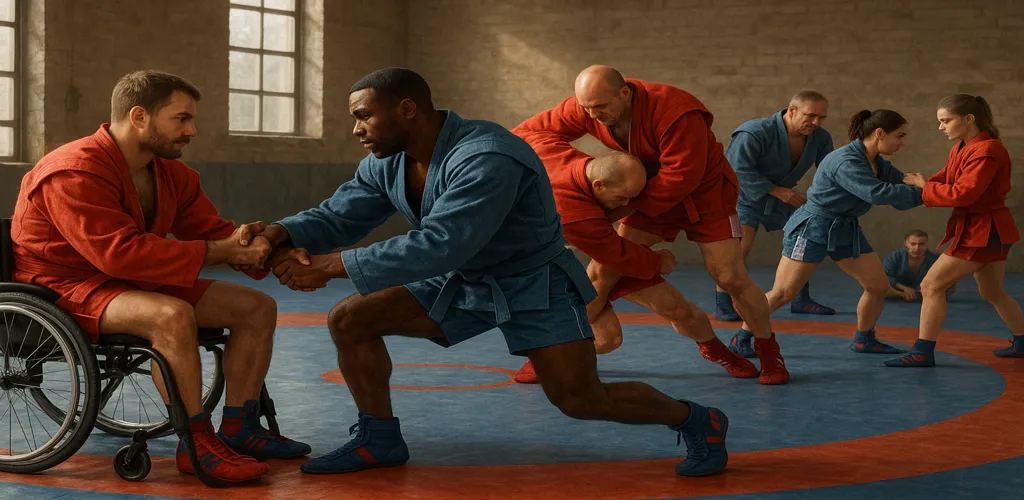Adaptive Sambo

Adaptive Sambo is an inclusive combat sport adapted from traditional Sambo to accommodate practitioners with physical, sensory, or cognitive disabilities. It maintains the essence of throws, groundwork, and positional control, while adjusting rules, training methods, and competition categories to ensure safety and equal opportunity. Developed with input from athletes, therapists, and Sambo federations, Adaptive Sambo fosters resilience, confidence, and community through martial arts. It is recognized by FIAS and various national bodies as a growing field that promotes accessibility in combat sports. The system proves that Sambo’s effectiveness and discipline can be shared by all.
Adaptive Sambo Essentials
About Adaptive Sambo
Discover Adaptive Sambo—a fully modified system designed to bring the benefits of Sambo to athletes with disabilities through customized training and safe competition.
Adaptive Sambo History
Explore the origins of Adaptive Sambo, from grassroots initiatives in Russia to international recognition by FIAS and its growing presence in para-sport development.
Philosophy & Approach
Understand the inclusive philosophy behind Adaptive Sambo—empowering each individual, respecting unique abilities, and building strength through adaptive movement and support.
Techniques & Style
Learn how traditional Sambo techniques like sweeps, throws, and pins are tailored to suit a wide range of physical abilities while retaining tactical logic and effectiveness.
Traditions & Etiquette
See how Adaptive Sambo preserves Sambo’s respectful culture—handshakes before and after matches, coach-student respect, and inclusive values integrated into every session.
Uniform & Symbols
Explore the standard Sambo attire (kurtka, shorts, and wrestling shoes) used with flexible adaptation, and how colors, patches, and national symbols represent inclusion and pride.
Weapons
Weapons are not part of Adaptive Sambo’s curriculum, as the system focuses entirely on grappling and control within a safe, unarmed sport setting.
Ranking System
Review how ranking in Adaptive Sambo reflects skill progression, control, and tactical ability—adapted to individual capacity while retaining challenge and recognition.
Adaptive Sambo Glossary
Familiarize yourself with terms like kurtka, pain hold, and throwing technique, alongside classification-specific terminology used in adaptive sport contexts.
Notable Figures
Meet key athletes, coaches, and organizers who have shaped Adaptive Sambo, promoted its visibility, and inspired others through international participation and outreach.
Branches & Organizations
Explore the federations and clubs worldwide that support Adaptive Sambo, from local programs to official branches of FIAS working on standardization and accessibility.
Competitive Format
Learn how Adaptive Sambo competition is structured—with classification categories, safety modifications, and scoring rules that promote fairness and performance.

